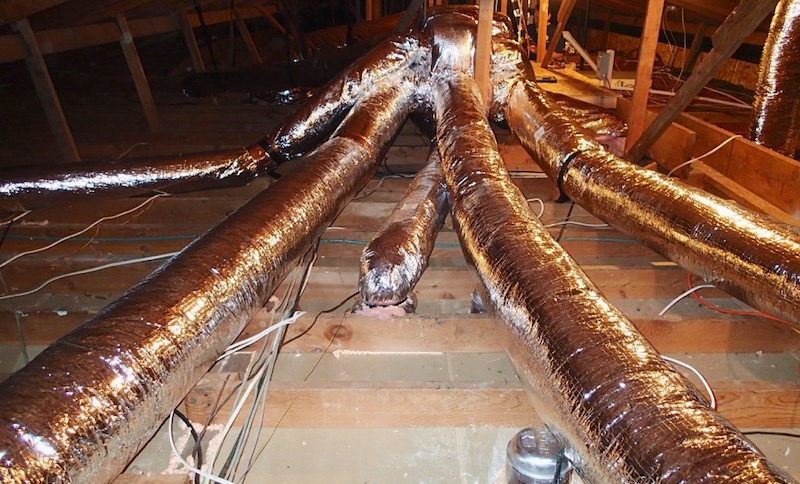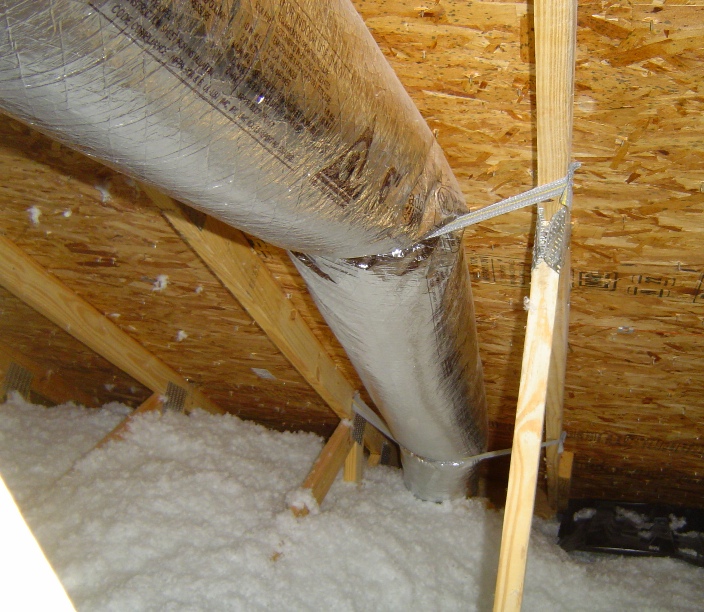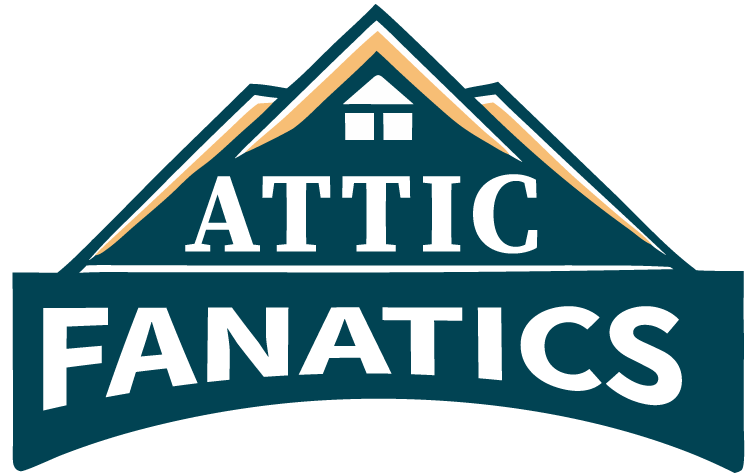⚡ How Attic Ductwork Affects Energy Efficiency

When homeowners think about energy efficiency, they often focus on windows, insulation, or appliances. Yet, there’s a hidden factor that quietly plays a major role: the ductwork running through your attic. While it may seem out of sight and out of mind, its impact on heating and cooling performance and your utility bills is substantial.
💨 The Silent Energy Drainer: Unprotected Ducts
Many homes have their air distribution systems located in the attic space. These ducts carry conditioned air throughout the house. However, attics often experience extreme temperature shifts, making them a challenging environment for uninsulated ductwork.
When ducts are not properly insulated or sealed, they absorb attic heat in the summer and lose warmth during colder months. This thermal exchange forces your HVAC system to work harder, consuming more energy to maintain the desired indoor temperature. Over time, this can lead to a significant drop in HVAC efficiency.
🔍 Spotting Signs of Trouble in Air Circulation
Inefficiencies in duct systems are not always obvious. However, there are clear indicators that something isn’t right:
Uneven temperatures between rooms
Higher-than-usual energy bills
Noticeable whistling or hissing sounds from vents
Excessive dust or reduced air quality indoors
These symptoms suggest that your airflow is compromised, either due to leaks, disconnected joints, or poorly installed duct lines.
📉 How Energy Loss Adds Up
Even small leaks or gaps in the duct system can lead to substantial energy loss. According to industry research, leaky ducts can lose up to 30% of the air moving through them. That means a large portion of the air you pay to heat or cool is never making it to your living spaces.
This loss not only reduces comfort but also drives up energy consumption. During peak seasons, your system may run longer cycles to compensate for the inefficiencies shortening its lifespan and increasing wear and tear.
🛠️ Solutions to Improve Attic Duct Performance
Addressing these issues doesn’t always require a complete overhaul. Here are practical steps to boost performance:
Duct Sealing
Use mastic sealant or metal-backed tape to close leaks at duct joints, connections, and seams. This helps prevent conditioned air from escaping before it reaches your vents.Duct Insulation

Insulating the ducts keeps the air inside closer to its intended temperature. Fiberglass wraps and foil-faced insulation sleeves are both effective solutions. This minimizes heat gain in summer and heat loss during winter.Professional Inspection
A trained technician can evaluate your system for pressure imbalances, airflow restrictions, and improper installation. While homeowners can spot some signs, in-depth assessments often require specialized equipment.
🌬️ Supporting Healthy Attic Airflow
Beyond duct-related concerns, the attic environment itself influences system performance. Poor ventilation traps heat and moisture, increasing strain on ductwork and raising the risk of condensation. This can lead to mold growth and material degradation over time.
Installing adequate vents or an attic fan improves overall airflow and temperature balance. This supports both the duct system and the building envelope.
🕒 When to Consider a Checkup
Not sure if your home has an issue? Here’s when it’s worth getting a closer look:
After major home renovations
If your HVAC is running constantly
Following a sudden spike in utility bills
When one area of the house is consistently too hot or cold
Timely intervention helps avoid more serious—and costly—problems down the line.
🧠 What Experts Recommend
According to specialists like the team at Attic Fanatics USA, proactive maintenance is key. They emphasize that addressing duct issues early not only reduces energy loss but also extends system life and improves indoor air quality.
Even if your HVAC unit is efficient, its effectiveness is tied to how well air is delivered. A poorly managed duct system limits the full benefits of high-performance equipment.
🔁 Recirculating Efficiency Into Your Home
By improving the condition and layout of attic ductwork, homeowners can dramatically enhance overall energy efficiency. Simple actions like sealing joints, wrapping insulation, and ensuring good attic ventilation offer measurable returns in comfort and cost savings.
Investing in these improvements means your HVAC doesn’t have to fight against avoidable challenges. With attention to detail and regular checkups, your duct system can become a quiet partner in creating a more comfortable and efficient home.








